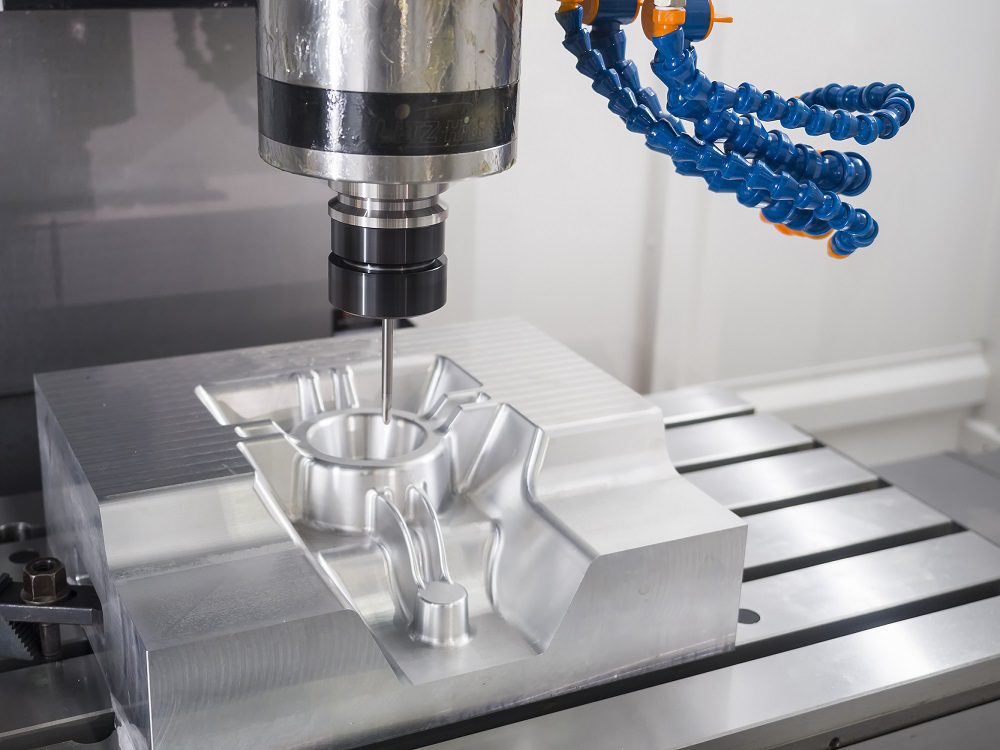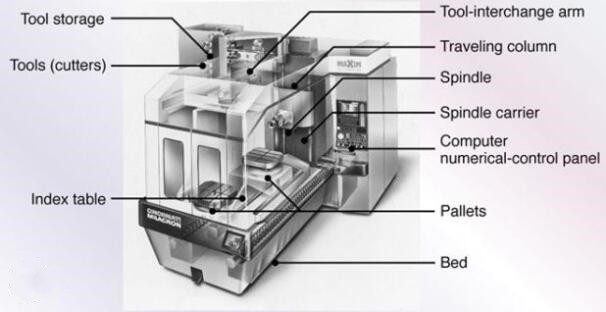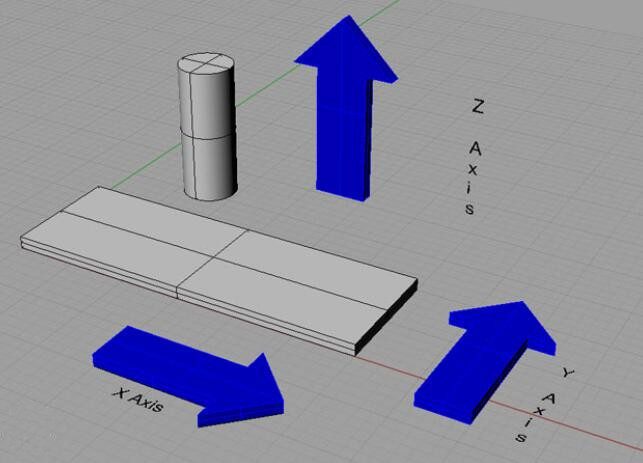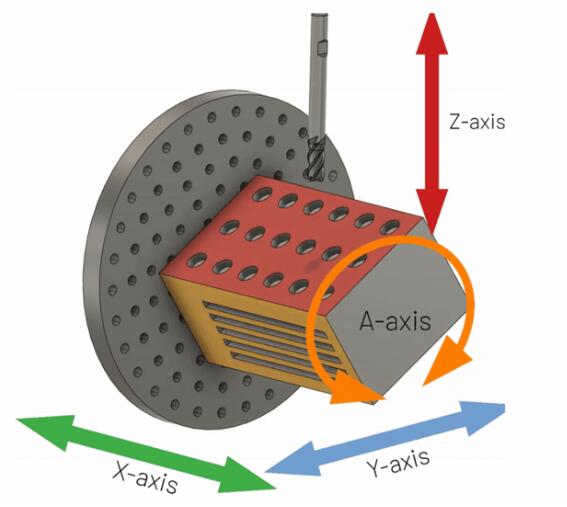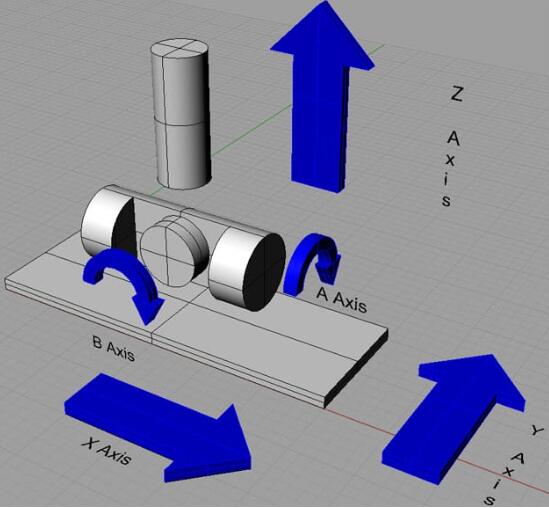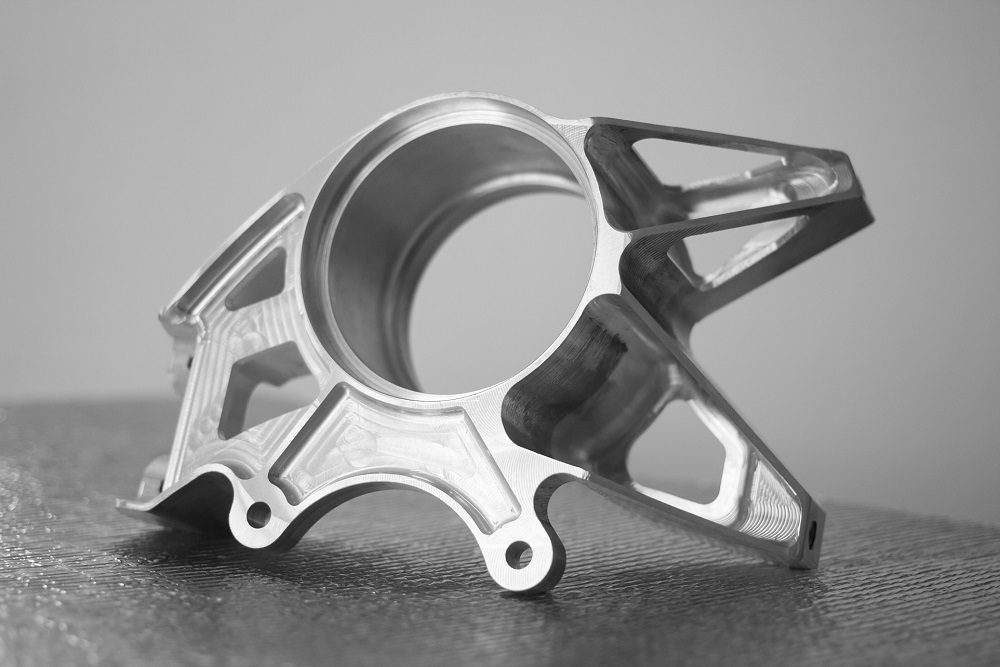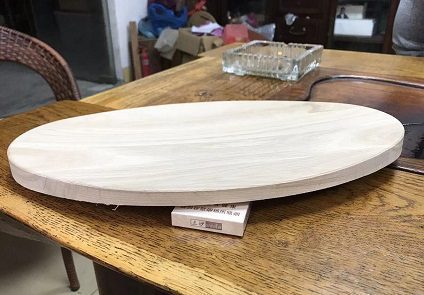In today’s technologically advanced era, the importance of milling in the manufacturing industry is unquestionable. Milling, a key machining process, involves the use of rotary cutters to remove material from a workpiece. Its versatility enables a wide range of shapes and features to be created, from slots and pockets to complex surface contours. Among the different types of milling processes, CNC milling stands out for its precision and efficiency. This article will delve into what CNC milling is, why it’s important, and what sets it apart.
The term “milling” refers to the process of cutting and drilling material, usually metal, using a cutting milling machine. This versatile process has been a staple in the manufacturing industry for centuries, continually evolving with technological advancements. With the advent of CNC (Computer Numerical Control) technology, the milling process underwent a revolutionary change, paving the way for CNC milling. In this comprehensive guide, we’ll unravel the intricate details of CNC milling, helping you understand its role in today’s manufacturing world.
CNC: A Brief Overview
As we delve into the realm of CNC milling, it is crucial to understand the fundamentals of CNC (Computer Numerical Control) technology. In essence, CNC is a high-precision method of automating machine tools using software and computer commands. The CNC process is used in numerous industries, from manufacturing to aerospace and even the arts.
CNC, an acronym for Computer Numerical Control, refers to a process used in the manufacturing sector that involves the use of computers to control machine tools. The CNC definition in machining context highlights its key role in the operation of tools such as lathes, mills, routers, and grinders.
The revolutionary impact of CNC technology cannot be understated. CNC machining processes have been at the heart of manufacturing advancements for the last few decades. By automating tool control, the CNC process allows for increased precision, efficiency, and flexibility in manufacturing.
At its core, CNC technology involves a computer converting the design produced by Computer-Aided Design (CAD) software into numbers. These numbers can be considered the coordinates of a graph, controlling the movement of the cutter. This entire process is what is CNC explained in the simplest of terms.
In the context of CNC milling, the introduction of CNC technology has brought about an unprecedented level of precision and efficiency. It has made it possible to produce complex, three-dimensional parts with a high degree of accuracy, transforming the capabilities of milling machining operations.
From the early days of manual milling to the present-day sophistication of CNC milling, it’s evident how much the manufacturing industry has evolved. Stay with us as we unravel more about this fascinating technology in our guide to CNC milling.
What is CNC Milling?
CNC milling, by definition, is a process in which a machine tool, usually a CNC milling machine, cuts material from a workpiece. The CNC milling machine follows a set of programmed instructions (G-code) to move the tool in at least three axes, allowing it to create specific shapes, slots, holes, and details on the workpiece. The process is often contrasted with CNC turning, where the workpiece rotates against a cutting tool.
As for the question, “what is a CNC miller?” or “what does a CNC miller do?“, a CNC miller is a professional who operates and manages CNC milling machines, interprets blueprints, and ensures the creation of precise parts according to specified measurements.
The history of CNC machining and specifically CNC milling is a testament to continuous technological advancement. Early numerical control (NC) machines were hard-wired and their operations guided by punch cards. The advent of computers introduced CNC, marking a significant leap in the realm of machine tooling. You can delve more into this fascinating history in our article on CNC Machining History.
The CNC milling process has continually evolved, with the latest CNC milling machines capable of following complex multi-axis movements to create intricate geometries. This progression in milling technology has widened the capabilities of manufacturing industries, from producing simple components to complex aerodynamic parts in aerospace applications.
Components of a CNC Milling Machine
Understanding a CNC milling machine begins with knowing its essential parts. These are the components that enable a CNC milling machine to perform complex milling operations with unparalleled precision and speed. Each part of a CNC mill plays a specific role and contributes to the overall functionality and performance of the machine.
- Spindle: In a CNC milling machine, the spindle holds and spins the cutting tool against the workpiece. Its speed, power, and capability (vertical or horizontal movement) play a significant role in the machine’s overall functionality.
- Tool Changer: This device holds multiple tools and rotates to swap out the cutting tool when needed, allowing for the seamless execution of various milling operations without manual intervention.
- Control Panel: This serves as the user interface where the CNC miller inputs the G-code (programmed instructions). Modern CNC mills may have advanced control panels with features like automatic tool diameter measurement and temperature control.
- Bed: The bed is where the workpiece is affixed, typically by a vice or other work-holding device. In a CNC milling machine, the bed can move in multiple directions, allowing for complex and precise cuts.
- Coolant Supply: CNC milling often requires a coolant to reduce heat and remove chips from the workpiece. The coolant supply system sprays or immerses the workpiece in a coolant during milling operations.
- Automatic Pallet Changer: This optional component allows for continuous CNC mill work without downtime for workpiece loading and unloading.
Types of CNC Milling Machines
When it comes to the types of CNC milling machines, there are several distinct designs, each optimized for specific milling operations or materials. Understanding these variations is critical when considering your production needs, whether it’s part complexity, production volume, or precision requirements.
- Vertical Mills: In vertical mills, the spindle is vertically oriented, and tools hang down from it, enabling them to cut into the top of a workpiece. This setup is typically used for surface finishing and detail work.
- Horizontal Mills: These have a horizontally oriented spindle. Horizontal mills are ideal for cutting heavy materials and performing large-scale operations.
- Turret Mills: Turret mills, also known as tower mills, feature a stationary spindle and a table that moves in both a perpendicular and parallel direction to the spindle axis to cut the material. They’re commonly used for specific forms of cutting milling machine operations.
- Bed Mills: Similar to turret mills, bed mills also allow the spindle to move up and down. However, the table only moves perpendicularly to the spindle axis, while the spindle itself moves parallelly.
For those asking, “what are the two types of CNC milling machines?” the basic division would be between vertical and horizontal mills. But as seen, the classification expands with other considerations.
Additionally, there are three basic types of milling machines, classified by their degrees of motion. These include:
- 3-Axis CNC Milling Machines: These machines move in three axes: X, Y, and Z. They’re the most common type of CNC milling machine used due to their affordability and ease of use.
CNC Milling Processes
Subtractive Manufacturing in CNC Milling
At its core, CNC milling is a form of subtractive manufacturing, meaning that it starts with a block of material (known as a workpiece), and the milling process gradually removes material until the desired shape is achieved. It’s like chiseling a statue from a block of stone but with a much higher level of precision and control.
Common CNC Milling Operations
Several distinct operations comprise the CNC milling process, each designed to achieve specific outcomes. Below, we highlight the most common ones:
- Face Milling: This operation involves cutting the surface of a workpiece to achieve a smooth finish. The cutting is done with a rotating tool, the cutter, which has multiple cutting edges.
- Plain Milling: Also known as slab milling, it is an operation that cuts along the surface of the workpiece to create flat, wide surfaces.
- Angular Milling: Angular milling or angle milling is used to create surfaces at an angle to the workpiece. It’s typically used for making angle cuts, grooves, and corrugations.
- Form Milling: In form milling, specialized cutters are used to create contours and shapes in the workpiece. This technique is commonly used for making complex parts in aerospace and automotive applications.
To increase the complexity of the designs, some manufacturers use multi-axis CNC milling. With the added axes of motion, they can create parts with intricate details and complex shapes that aren’t possible with a traditional 3-axis machine.
Applications of CNC Milling
Industries Benefiting from CNC Milling
- Aerospace: The precision, repeatability, and ability to work with various materials make CNC milling indispensable in the aerospace industry. From turbine parts to structural components, CNC milling plays a crucial role.
- Electronics: In the electronics industry, the demand for precision and miniaturization is high. CNC milling machines can make precise cuts and shapes required for electronic components and casings.
- Medical: The medical industry uses CNC milling for manufacturing medical devices and instruments. Given the requirement for stringent accuracy, CNC milling is well-suited for creating parts like prosthetics, orthotic devices, and surgical instruments.
- Automotive: In automotive manufacturing, CNC milling is used to create parts like engine components, custom flanges, and many more. The versatility of CNC milling makes it suitable for both prototype creation and mass production.
Specific Products Manufactured Using CNC Milling
CNC milling is also crucial in the production of many specific components:
- Metal Gears: The milling process can cut the precise teeth needed for metal gears in automobiles, machines, and various equipment.
- Medical Implants: CNC milling’s precision and ability to work with a wide range of materials make it ideal for creating custom implants.
- Enclosures: The versatility of CNC milling allows it to create enclosures for a multitude of electronic devices and equipment.
Materials Used in CNC Milling
In the realm of CNC milling, the choice of material is as diverse as the parts produced. The selection of the right material involves the consideration of factors such as the mechanical properties required, the operating environment of the part, cost, and more.
This list is by no means exhaustive, but it provides an insight into the most commonly used materials in CNC milling. The choice of material is dictated by the specific requirements of the project, including the physical and chemical properties needed for the final part.
Factors Influencing the Cost of CNC Milling
Determining the cost of CNC milling is a complex process that depends on several variables. Here are some key factors that can influence the cost:
Material Costs
The choice of material has a significant impact on the overall cost of a CNC milling project. Different materials have different prices depending on their availability, machinability, and the properties they possess. For instance, precious metals like gold or materials with high performance like titanium would be more expensive than aluminum or plastic.
Machine Usage Time
The time it takes for the CNC milling machine to produce a part also impacts the cost. This includes the time for setup, machining, and any necessary post-processing steps. Complex parts that require high precision often take more time to machine, thereby increasing the cost.
Complexity of Parts
The complexity of the parts being produced can influence the cost as well. Simple parts can be produced more quickly and with less potential for error, thus they are often cheaper. On the other hand, complex parts may require the use of a 5-axis CNC machine, more machine time, and potentially more expensive tools, leading to a higher cost.
Level of Operator Skill Required
CNC milling often requires highly skilled operators, especially for complex parts. The labor cost for these skilled workers can be a significant part of the overall cost.
Despite these costs, it’s important to remember that the use of CNC milling often leads to cost savings in other areas, such as reduced waste and increased efficiency. By optimizing your design and planning your project effectively, you can minimize costs while maximizing the benefits of CNC milling.
Advantages and Disadvantages of CNC Milling
Advantages of CNC Milling
CNC milling provides numerous benefits, making it a popular choice for a range of industries.
- Accuracy and Repeatability: With computer-controlled precision, CNC milling machines can produce parts with high accuracy and consistency. This repeatability ensures that every part is identical, a crucial factor for large-scale production.
- Versatility: From simple geometric shapes to complex three-dimensional parts, CNC milling machines can handle a wide variety of designs. Advanced milling machines can even rotate the part during machining, allowing the creation of intricate, detailed pieces.
- Efficiency: Once the design is programmed into the CNC milling machine, it can continuously manufacture parts with minimal supervision. This allows for high productivity rates and efficient use of resources.
- Flexibility: CNC milling is suitable for a variety of materials, including metals, plastics, and wood. This versatility means you can select the optimal material for your part’s purpose and requirements.
However, despite its numerous advantages, it is important to note that CNC milling does come with some drawbacks.
Disadvantages of CNC Milling
- High Initial Cost: CNC milling machines are expensive to purchase, and the cost of maintenance and repair can also be high. For businesses just starting, this initial investment may be a barrier.
- Skilled Labour: Operating a CNC milling machine requires training and expertise. Though the machines run automatically once programmed, a skilled worker is needed to input the design and ensure that the machine is functioning correctly.
Limitations on Feasible Designs: While CNC milling can produce complex parts, some designs may still be too difficult or impossible to machine, particularly those with hidden geometries or hard-to-reach features.
Future Trends in CNC Milling
As with all areas of technology, CNC milling is continually evolving, with new advancements promising to further revolutionize the process. Let’s take a look at some of the trends to watch out for:
- Artificial Intelligence (AI) and Machine Learning: AI and machine learning are playing increasingly significant roles in CNC milling. These technologies can be used to analyze patterns in data collected from CNC milling machines, allowing for predictive maintenance, which can lead to increased machine lifespan and improved performance.
- Internet of Things (IoT): IoT technology allows for real-time data collection and analysis from CNC milling machines. This technology enables manufacturers to closely monitor their machines, make quick adjustments, and catch potential issues early on.
- Automation: The trend towards full automation in CNC milling continues. Automated tool changers, workpiece handlers, and even systems for monitoring and managing tool wear are becoming more commonplace.
- Advanced Materials: The ongoing development and usage of advanced materials such as carbon fiber composites and high-strength, lightweight alloys present new opportunities and challenges for CNC milling.
- Sustainability: As sustainability becomes more crucial, manufacturers are looking for ways to make their CNC milling operations more eco-friendly. This includes using more energy-efficient machines and finding ways to recycle waste from the milling process.
Conclusion
In the rapidly advancing world of manufacturing, CNC milling stands as a testament to the power of technological innovation. As we’ve seen, this process, at its heart, involves the use of pre-programmed computer software to control the movement of machinery, thereby creating precise, three-dimensional parts.
In the final analysis, CNC milling is much more than a manufacturing process. It is a testament to human ingenuity, a tool that has expanded the boundaries of what is possible, and a key driver of global industry. Whether you are an industry professional or an interested observer, there is no denying the significance and potential of CNC milling in the modern world.
Frequently Asked Questions (FAQ)
How much is CNC milling per hour?
Generally, the hourly rate can range from $50 to $150 per hour.
How is CNC milling different from normal milling?
CNC milling uses computer technology for enhanced precision, complexity, and repeatability. Traditional milling relies on manual operation, which can be more time-consuming and less precise.
What is the difference between CNC milling and machining?
CNC milling is a type of CNC machining. While CNC machining refers to any process that uses computer software to control machine tools, CNC milling specifically refers to the process that uses rotating tools to remove material.
Is milling the same as cutting? Milling is a type of cutting process.
However, milling is distinct as it involves the use of a rotating tool (the mill) that removes material from a workpiece.


